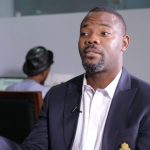BY CHIMA NWAFO
In every aspect of life, learning and economics, older Nigerians can always recall good old days. Sometimes the younger folks get sceptical, given that they’ve not seen traces of those good old days. Besides, it’s somehow hypocritical that a nation fought and won the battle for independence from colonial rule, yet, six decades after, rather than things getting better they are getting worse. Coincidentally, from an unlikely quarter came a bitter lamentation in Friday’s Daily Sun. Double Chief, Duro Onabule, angrily lambasted the dirtiness of our environment – from the old and new capital cities of Lagos and Abuja to all the major towns, from the East to the West down to the North – vis-à-vis what it used to be during the colonial days. And, perhaps, in the early years of the First Republic too. As the chief noted, “ironically, the Sanitary Inspectors” and other officials that supervised those facilities were Nigerians. So what went wrong? Simple: governance.
In the same vein, there used to be an Electricity Corporation of Nigeria (ECN), which provided effective and reliable electricity supply in all the major towns of the country. There was also a Niger Dams Authority (NDA) that provided similar services in parts of the North. Recently, ThisDay published in the form of a full-page advertisement, but from the archives, Warning Notice from the ECN, informing the public of a likely power-cut, ahead of time. It was a collector’s item, both for those who witnessed it and the younger folks who can’t believe such existed, given the sate of power supply today. Perhaps, trouble began in 1972, after “amalgamation” of ECN and NDA to birth the notorious National Electric Power Authority (NEPA). It’s performance could better be evaluated by the public’s cynical interpretation of the acronym – NEPA – as Never Expect Power Always. And then, there was an explosion of industrialization in the 1970s, following the success of the government’s import substitution policy, which led to the growth of manufacturing nationwide, until IBB and Abacha’s policies caused their gradual atrophy.
The foregoing is only relevant to our discourse this week to the extent that renewable energy is an alternative source of power generation away from the troublesome and problematic fossil energy, better represented by Nigeria’s near-solo forex earner, crude oil/gas and yet-be exploited coal reserves. On the other hand, renewable energy, which unlike its fossil counterpart is not expendable, consists of biofuel, biogas, biomass, geothermal, solar, hydropower, tidal power, wave power and wind power.

Like many other areas of domestic and industrial activity, it was also from the developed economies that make millions from the exploitation of fossil energy that equally decried its demerits. As a result, using 100 per cent renewable energy was first suggested in a paper in the Science journal published sometime in 1975 by a Danish physicist, Bent Sørensen. The following, according to Wikipedia, Energy Policy Analyst, Amory Lovins coined the term “soft energy paths” to describe an alternative future where energy efficiency and appropriate renewable energy sources would replace “centralized energy systems based on fossil and nuclear fuels.”

Even though the epileptic performance of our power-supply agencies, gencos and discos has been Nigerians’ major rationale for seeking alternative sources of energy, that was not the case in the developed climes. There, the desire for 100 per cent renewable energy to generate electricity, for heating, cooling and transport was compelled by the threat of Global Warming, pollution/environmental challenges, and other economic concerns. According to the Intergovernmental Panel on Climate Change, “there are few fundamental technological limits to integrating a portfolio of renewable energy technologies to meet most of total global energy demand. Shifting the total global primary energy supply to renewable sources requires a transition of the energy system.”
However, renewable energy use has spiked faster even advocates anticipated. Yet, it needs to “grow six times faster to limit global warming to 2 °C (3.6 °F).” But, professor of civil and environmental engineering at Stanford University and director of its Atmosphere and Energy programme, Mark Z Jacobson, avers that producing all new energy with wind power, solar and hydro power by 2030 is feasible, and that existing energy supply arrangements could be replaced by 2050. Barriers to implementing the renewable energy plan are seen to be “primarily social and political, not technological or economic.”
From his American economy background, where several states are utilizing renewable energy resources, Jacobson argues that energy costs today with a wind, solar, and water system should be similar to today’s energy costs from other optimally cost-effective strategies. To him, any obstacle against such can only be attributed to the lack of political will. When his conclusions attracted negative criticisms from researchers, the professor published a response that disputed their verdict point-by-point, insisting that the authors were motivated by “allegiance to energy technologies that the 2015 paper excluded.”
In agreement with the Stanford University professor’s postulation, was the 2013 Post Carbon Pathways report, which reviewed many international studies, the key roadblocks are: Climate change denial, fossil fuels lobby, political inaction, unsustainable energy consumption, outdated out-dated energy infrastructure and financial constraints. As of 2018, according to REN21, transformation was picking up speed in the power sector, but urgent action is required in heating, cooling and transport. “There are many places around the world with grids that are run almost exclusively on renewable energy. At the national level, at least 30 nations already have renewable energy contributing more than 20 per cent of the energy supply.”

Providing further evidence of encouraging strides, an evaluation of the 181 Peer Reviewed papers on 100 per cent renewable energy, which were published until 2018, showed that “the great majority of all publications highlighted the technical feasibility and economic viability of 100 per cent renewed energy systems.” While there are still many publications which focus on electricity only, there is a growing number of papers that cover different energy sectors and integrated energy systems. This cross-sectoral, holistic approach is seen as an important feature of 100 per cent renewable energy systems and is based on the assumption “that the best solutions can be found only if one focuses on the synergies between the sectors” of the energy system such as electricity, heat, transport or industry.
Given the foregoing backdrop and available data which confirms the several countries have already attained 50-85 per cent use, it is interesting to read of the Renewable Energy Association of Nigeria’s determination to promote renewable energy in the country to about 40 per cent by 2030. Mrs Lande Abudu, the executive secretary who disclosed this in an interview with the News Agency of Nigeria noted: “Our members are doing a lot in the development of renewable energy from primary health care solutions, and solar power solutions among others. We cannot do anything without access to power, so we are trying to form part of the solutions to ensure that everybody have access to power.”
*Nwafo, Veteran Copy Editor/Environmental Analyst, can be reached on: [email protected].

Share your story or I Witness Reports
with us 24/7 via: SMS: +234 (0)9076248001
Whatsapp: +234(0)8072022024, Email: [email protected]
Website: www.gatmash.com
For advert placement, contact us today via email: [email protected] or call our hotlines on Tel: +234(0)8072022024, 08166622444, 09076248001






